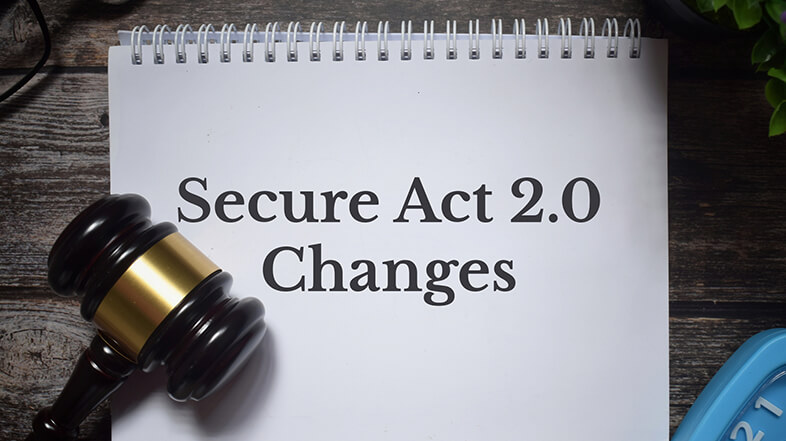
The IRS recently announced a 2-year delay to the planned changes in catch-up contributions in 401(k)s and Thrift Savings Plans.
The new rule requiring high-income investors to make catch-up contributions only to Roth 401(k) accounts will not take effect until 2026.
This update comes as a relief to many who were concerned they might not be able to even make catch-up contributions should their employers not offer the Roth provision.
Keep reading for what’s changed and why, and what you need to know to plan accordingly for the future.
The Secure Act 2.0 Changed Catch-Up Contributions

Under the Secure Act 2.0, section 603, passed in December of 2022, 401(k) investors ages 50 and over who make more than $145,000 have to make catch-up contributions to an after-tax Roth 401(k) account instead of a traditional pre-tax 401(k).
The new rule was set to go into effect January 1, 2024.
The short deadline had many employers and plan providers scrambling to implement the provision in time due to the complicated nature of setting up a system that would funnel high-income employees into making only Roth catch-up contributions.
This also had investors concerned if their companies didn’t have a Roth 401(k) provision because – under this new rule – investors would not have been allowed to make catch-up contributions at all.
The short deadline originally set forth in the Secure Act 2.0 would have left a lot of investors closer to retirement unable to use their catch-up contributions to save even more should their employers not have the Roth in place.
Not good, considering the retirement crisis we have in America and that the Secure Act 2.0 aimed to help more people save even more.
IRS Delays the New Rule

The IRS clarified that they have set up a 2-year “administrative transition period” for the new Roth catch-up contributions requirements, delaying the implementation until 2026.
According to the IRS, “The administrative transition period will help taxpayers transition smoothly to the new Roth catch-up requirement and is designed to facilitate an orderly transition for compliance with that requirement. The notice also clarifies that the SECURE 2.0 Act does not prohibit plans from permitting catch-up contributions, so plan participants who are age 50 and over can still make catch-up contributions after 2023.”¹
What This Means for You

For now, those who make $145,000 or more who rely on catch-up contributions to bolster their retirement savings can continue to make contributions as planned in their 401(k)s – and get the tax break.
And do so for the next 2 years.
This also gives high-earning investors time to adjust their retirement strategy in anticipation of this rule taking effect in 2026.
Remember, in 2023, the 401(k) catch-up contribution is $7,500 in 2023, which means you can stash away $30,000 total.
Major Secure Act 2.0 Changes You Need to Be Aware Of

There’s a lot in the Secure Act 2.0 that changes how you save and plan for retirement.
We encourage you to reach out to a third-party expert who can advise you on how this new law specifically affects you and what changes may need to be made to your retirement strategy.
Before you reach out, please note that the type of advice you receive about your finances may be impacted by the type of advisor you resource for advice.
Check out our no-cost guide on how to understand The Different Types of Licenses Financial Advisors Have and What They Mean to You.
Sources:
.fb-background-color {
background: !important;
}
.fb_iframe_widget_fluid_desktop iframe {
width: 1100px !important;
}
















